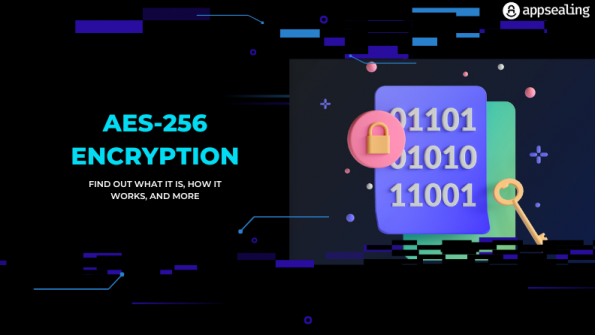In the contemporary digital landscape, security has emerged as an omnipresent concern, particularly as data breaches have become alarmingly prevalent. As organizations increasingly turn to open-source solutions for their cryptographic needs, a pressing question arises: Can open source be secure? This inquiry necessitates a thorough examination of security paradigms, particularly focusing on the Advanced Encryption Standard (AES) and its AES-256 variant.
AES, established as a federal standard in 2001 and endorsed by the National Institute of Standards and Technology (NIST), exemplifies a robust encryption algorithm. AES is predicated upon a symmetric key structure, where the same key is utilized for both encryption and decryption processes. The 256-bit variant, AES-256, is particularly noteworthy due to its enhanced bit-length, which significantly bolsters security. The potential for breakage through brute-force attacks is exponentially increased with each additional bit, putting the number of possible keys beyond reach for all practical purposes.
The allure of open-source software lies in its transparency. Unlike proprietary systems, where the inner workings are shrouded in secrecy, open-source frameworks allow for comprehensive scrutiny by the global community of developers. This transparency engenders trust, as vulnerabilities can be identified and rectified with a collaborative spirit. Furthermore, it invites diverse perspectives, fostering innovation that is vital for security robustness.
However, the merits of open-source security are often counterbalanced by the specter of inadequately maintained code. Open-source projects can vary dramatically in quality, with some suffering from lapses in oversight. This variability can lead to vulnerabilities that unscrupulous actors may exploit. Thus, while the promise of crowd-sourced oversight exists, it hinges on the active participation of the community in vigilance and maintenance.
The juxtaposition of open-source cryptography with proprietary solutions compels an analytical exploration of their inherent traits. Proprietary software, safeguarded by intellectual property laws, often presents an illusion of security, predicated on the belief that obscurity is a protective measure. This notion presumes that if the inner mechanics remain closely guarded, adversaries will be thwarted. However, history has demonstrated that relying solely on secrecy is seldom sufficient, as attackers may still discern vulnerabilities through persistent effort.
On the other hand, the open-source model acknowledges that threats exist, prompting a more proactive approach to security—one that invites constant testing and retesting of cryptographic algorithms. AES-256 stands as a prime example within this realm, with its implementation scrutinized over two decades. Extensive academic and practical analysis has validated that despite its open accessibility, AES-256 remains resistant against known attack vectors.
In addition, the concept of community collaboration in code review cannot be overstated. When experts and enthusiasts alike examine algorithms, the frequency of identified flaws can decrease dramatically. Bugs discovered in a proprietary system may linger for extended periods, unnoticed by the developers under the constraints of a corporate environment, whereas open-source projects thrive on collective effort, leading to swifter remediation.
Yet, curiosity around the security of open-source encryption can lead to misconceptions about the strength of the algorithms themselves. AES-256’s potential for security should not be conflated with an assumption that all open-source software is inherently secure. The foundation of AES-256’s security lies in its sound mathematical principles, its resistance to differential and linear cryptanalysis, and the extensive scrutiny it has endured—elements that are sometimes misrepresented in discussions surrounding open-source security.
It is also essential to consider the threat landscape continually evolving. As computational power surges and new attack methodologies are developed, algorithms that once held robust security can become obsolete. Open-source frameworks enable a dynamic response to these challenges, encouraging adaptable security measures. Azure quantum computing, for instance, presents future threats to traditional encryption methodologies, yet AES-256 developers can pivot and adapt the algorithm in light of these advancements, fostering resilience amidst change.
The application context of AES-256 further elucidates its strength. While it is often deployed within various domains—ranging from securing web traffic (HTTPS) to protecting sensitive data on government, industrial, and personal devices—its robustness is maximized only when implemented alongside secure key management practices. Open-source tools can augment this aspect, providing users with the necessary infrastructure to protect their encryption keys from unwarranted access.
In conclusion, the inquiry into whether open source can be secure finds a nuanced answer. The case for AES-256 elucidates many of the advantages inherent in open-source cryptography, particularly the benefits of transparency, community collaboration, and adaptability to an evolving threat landscape. While challenges persist in maintaining high standards within open-source projects, the collective endeavor toward robust encryption remains a testament to the potential workings of a securely united community. As the digital world presses forward, scrutinizing the integrity of both proprietary and open-source systems will remain a pivotal endeavor in the quest for secure data protection.









Leave a Comment